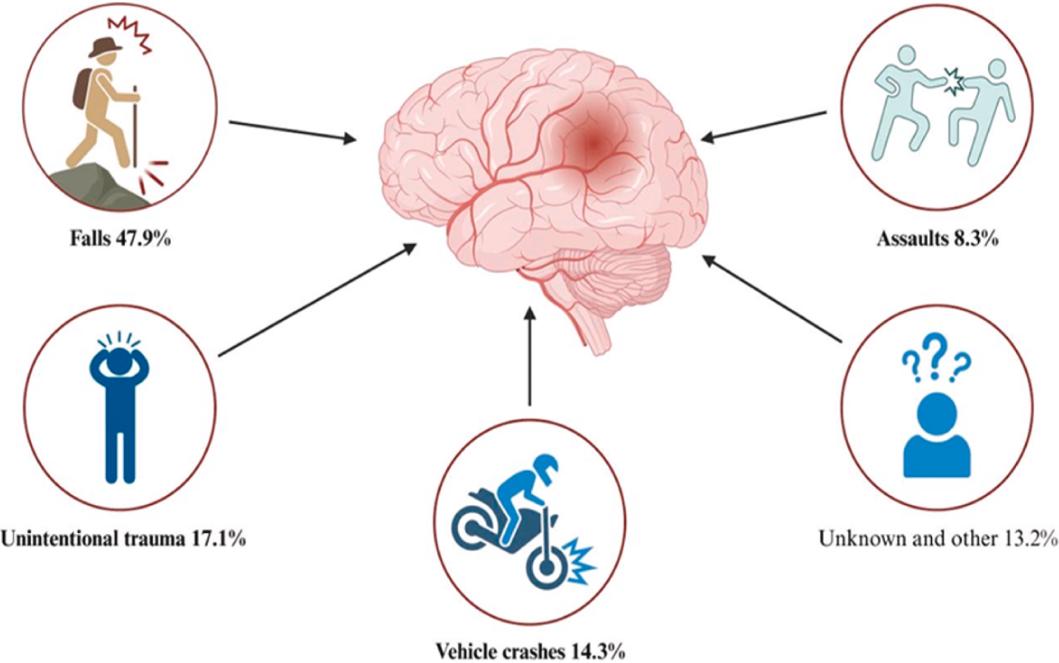Traumatic Brain Injury (TBI) Model
If you are looking for reliable and accurate data on traumatic brain injury (TBI) about your compounds, you may be interested to know that Creative Bioarray has established and validated many models of TBI. At Creative Bioarray, we conduct contract research using this model to help you get the most out of your studies. Our team of experts is dedicated to providing you with high-quality data so that you can advance your research with confidence.
Traumatic brain injury (TBI) is a devastating condition that affects both children and adults. It is caused by a variety of factors, including traffic accidents, sports injuries, and accidents on construction sites and during military operations. TBI can lead to a range of disabling conditions, such as impairments in consciousness, speech, physical activity, mental and emotional disorders, and other sequelae, which can have a significant impact on their quality of life. Despite advances in neurosurgical techniques, the rate of disability among TBI survivors has not decreased significantly. Therefore, it is crucial to study the key factors that regulate secondary nerve injury after TBI and identify new targets for improving the prognosis of patients with TBI.
 Fig. 1 Common causes of TBI
Fig. 1 Common causes of TBI
Our Animal Models of Traumatic Brain Injury (TBI)
To gain insights into the pathological traits of TBI and evaluate potential treatment strategies, various animal models have been established and characterized. At Creative Bioarray, we specialize in providing expertise in the following models of TBI in rodents. These models have been extensively studied and can provide valuable insights into the underlying mechanisms of TBI, as well as potential treatment strategies.
Quotation and Ordering
Equipped with cutting-edge facilities and a team of seasoned scientists, Creative Bioarray is uniquely positioned to assist our clients in selecting the most appropriate model, customizing study-specific protocols and plans, and generating reliable data. Whether the aim is to progress a compound towards out-licensing, expand the therapeutic potential of already approved drugs, or advance a compound to clinical trial stages, Creative Bioarray stands ready to offer support. If you are interested in our services, please do not hesitate to contact us or submit an inquiry to us directly.
Reference
- Beylerli, O., Tamrazov, R., et al. Role of exosomal ncRNAs in traumatic brain injury. Non-coding RNA Research, 2023, 8(4): 686-692.
For research use only. Not for any other purpose.
Disease Models
- Oncology Models
-
Inflammation & Autoimmune Disease Models
- Rheumatoid Arthritis Models
- Glomerulonephritis Models
- Multiple Sclerosis (MS) Models
- Ocular Inflammation Models
- Sjögren's Syndrome Model
- LPS-induced Acute Lung Injury Model
- Peritonitis Models
- Passive Cutaneous Anaphylaxis Model
- Delayed-Type Hypersensitivity (DTH) Models
- Inflammatory Bowel Disease Models
- Systemic Lupus Erythematosus Animal Models
- Oral Mucositis Model
- Asthma Model
- Sepsis Model
- Psoriasis Model
- Atopic Dermatitis (AD) Model
- Scleroderma Model
- Gouty Arthritis Model
- Carrageenan-Induced Air Pouch Synovitis Model
- Carrageenan-Induced Paw Edema Model
- Experimental Autoimmune Myasthenia Gravis (EAMG) Model
- Graft-versus-host Disease (GvHD) Models
-
Cardiovascular Disease Models
- Surgical Models
- Animal Models of Hypertension
- Venous Thrombosis Model
- Atherosclerosis model
- Cardiac Arrhythmia Model
- Hyperlipoidemia Model
- Doxorubicin-induced Heart Failure Model
- Isoproterenol-induced Heart Failure Model
- Arterial Thrombosis Model
- Pulmonary Arterial Hypertension (PAH) Models
- Heart Failure with Preserved Ejection Fraction (HFpEF) Model
-
Neurological Disease Models
- Alzheimer's Disease Modeling and Assays
- Seizure Models
- Parkinson's Disease Models
- Ischemic Stroke Models
- Acute Spinal Cord Injury (ASCI) Model
- Traumatic Brain Injury (TBI) Model
- Hypoxic-Ischemic Encephalopathy (HIE) Model
- Tourette Syndrome (TS) Model
- Amyotrophic Lateral Sclerosis (ALS) Model
- Huntington's Disease (HD) Model
- Intracerebral hemorrhage (ICH) Models
- Schizophrenia Model
- Pain Models
-
Metabolic Disease Models
- Type 1 Diabetes Mellitus Model
- Type 2 Diabetes Mellitus Model
- Animal Model of Hyperuricemia
-
Nonalcoholic Fatty Liver Disease Model
- High-Fat Diet-Induced Nonalcoholic Fatty Liver Disease (NAFLD) Model
- Methionine and Choline Deficient (MCD) Diet-Induced Nonalcoholic Fatty Liver Disease (NAFLD) Model
- Gubra-Amylin NASH (GAN) Diet-Induced Nonalcoholic Fatty Liver Disease (NAFLD) Model
- Streptozotocin (STZ) Induced Nonalcoholic Fatty Liver Disease (NAFLD) Model
- High Fat Diet-Induced Obesity Model
- Diabetic Foot Ulcer (DFU) Model
- Liver Disease Models
- Rare Disease Models
- Respiratory Disease Models
- Digestive Disease Models
-
Urology Disease Models
- Cisplatin-induced Nephrotoxicity Model
- Unilateral Ureteral Obstruction Model
- 5/6 Nephrectomy Model
- Renal Ischemia-Reperfusion Injury (RIRI) Model
- Diabetic Nephropathy (DN) Models
- Passive Heymann Nephritis (PHN) Model
- Adenine-Induced Chronic Kidney Disease (CKD) Model
- Kidney Stone Model
- Doxorubicin-Induced Nephropathy Model
- Orthotopic Kidney Transplantation Model
- Orthopedic Disease Models
- Ocular Disease Models
- Skin Disease Models
- Infectious Disease Models
- Otology Disease Models